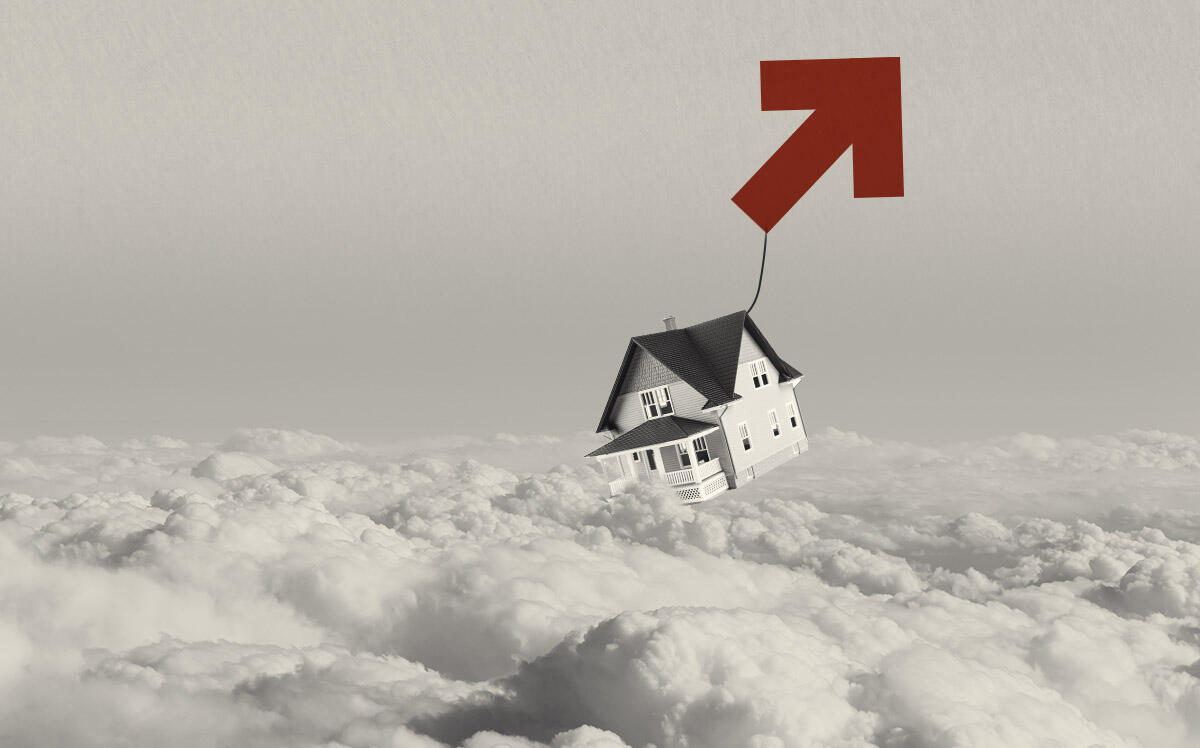Bonkers. Crazy. Frenzied. That’s how property agents sum up the Bay Area residential market since the start of the pandemic – and they’re bracing for more as the new year begins.
Energizer Bunny-powered stocks, work-from-home policies and a potential return to remote schooling sparked by the omicron surge are giving buyers more reasons to spend on the place where they plan to spend the majority of their time.
Across the Bay Area, median home prices jumped 30 percent between early 2020 and late 2021, according to Compass data. Several counties rose even more: Contra Costa showing the highest, at 44 percent, and East Bay neighbor Alameda County was just behind at 42 percent.
Though prices will keep rising, this next year won’t resemble the early days of the pandemic, when 20 to 30 offers on a home was the norm, according to Golden Gate-Sotheby’s agent Herman Chan, who specializes in the East Bay. By last year, three to five offers were more typical as buyers realized they needed to submit “A-plus-grade offers and extra credit tossed in for good measure,” he said.
“After that crazy Q1 and Q2 of 2020, buyers got the picture,” he said. “If you’re not going to strike hard and go for the gold, don’t even try.”
As buyers become more strategic with their offers, they’re moving forward on homes that fit ever-growing pandemic wish lists. Most are funding purchases with stock market gains after a buoyant two years. These days, they’re seeking houses big enough to fit two offices, home schooling and a gym, as well as outdoor spaces for socially distanced entertaining and pandemic pups.
As high-profile quality of life crimes make headlines, realtors are also hearing more concern about security. Marin agent Shana Rohde-Lynch at Compass said several new clients from San Francisco cited crime among their reasons to look in the North Bay county, where median home prices jumped 34 percent. One recent San Francisco buyer said her five-year-old had asked why a homeless person using a needle was vaccinating himself.
“This triggered a more serious search for a home in Marin,” Rohde-Lynch said.
Even suburban homes get “bonus points” for high-end security cameras, fencing, gated driveways and enclosed garages, according to Chan: “The crime waves have become more prevalent and high profile and seeped into more established neighborhoods and suburbs.”
Oakland had more than 400 shootings in 2021, almost 50 percent above 2020, and more than 700 armed robberies, also up by half, according to Oakland Police Department statistics. The number of carjackings rose to more than 300, double the 2020 number.
In San Francisco, total violent crimes in the city fell slightly in 2021 from 2020, although homicides rose about 17 percent and assaults by 9 percent, according to SFPD data, Larcenies jumped by about a fifth, even as burglaries and car thefts dropped a bit.
Not all agents agree that crime is a concern. Such worries are “completely overblown,” said Michael Bellings, a Compass agent. “San Francisco is still the same city that I grew up in,” he tells apprehensive out-of-area buyers, and they tend to agree once they arrive. “One client just said, ‘LA is way worse than here,’” he said.
San Francisco buyers still favor single-family homes over condos, although the condo market has been gaining. In the last quarter of 2020, according to Compass, the average San Francisco condo was on the market 52 days and sold for 3 percent under the list price, compared with 31 days and 5 percent over list for single-family homes. In the last quarter of 2021, condos were selling in an average of 39 days at 3 percent over asking, while single-family homes were purchased in an average of 22 days for 15 percent over list.
One reason for the condo comeback, other than the lack of single-family inventory, is that people again want to be near commercial corridors, Bellings said, though they’re unwilling to budge on demands for private or semi-private outdoor space. Condos in older, smaller buildings that offer shared backyards and private decks are winning out over highly amenitized high-rises, he said.
The desire for more space, indoors and out, near outdoor attractions and vibrant commercial districts lifted sales in the city’s western neighborhoods, such as the Richmond and the Sunset, which run to the north and south of Golden Gate Park and end at the beach. While the low-density areas were already gaining in popularity over the last few years, the pandemic just “shot them into the stratosphere,” Bellings said.
Homes in the Richmond are selling for more than $3 million, which is “wacky,” he said. “I don’t think that’s going away in those neighborhoods.”
Read more

